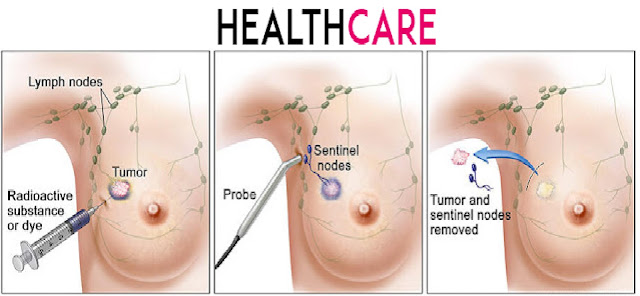Lumpectomy vs. Breast-Conserving Surgery:
Which is Best for You?
Lumpectomy, also known as partial mastectomy or breast-conserving surgery, is a procedure that removes the cancerous lump and a small amount of surrounding tissue from the breast. This procedure allows for preservation of the majority of the breast tissue, resulting in an aesthetically more pleasing result than a full mastectomy. The amount of tissue removed during a lumpectomy varies based on the size and location of the cancerous lump and can range from less than an inch to several inches of tissue. After the cancerous cells are removed, radiation or chemotherapy may be used to further treat any remaining cancer cells.
What are the benefits of lumpectomy?
Lumpectomy is a common surgical procedure used to remove cancerous cells from the breast. It can be used as a stand-alone treatment, or combined with other treatments such as chemotherapy, radiation, and/or hormone therapy.
Benefits of lumpectomy include:
1. Improved cosmesis: Lumpectomy preserves the natural shape of the breast, allowing patients to maintain their body image.
2. Reduced risk of recurrence: Lumpectomy is associated with a lower rate of breast cancer recurrence than mastectomy.
3. Improved safety: Lumpectomy involves the removal of only a small portion of the breast tissue, reducing the potential for injury and complication.
4. Combined with Breast-Conserving Surgery: In some cases, a lumpectomy may be followed by breast-conserving surgery, which removes additional tissue from the affected area but leaves more of the breast intact than a mastectomy. This can reduce the amount of healthy tissue that must be removed, resulting in improved cosmetic outcomes and a greater chance for successful treatment.
What are the risks of lumpectomy?
Although lumpectomy is a safe and effective way to remove cancerous tissue from the breast, it does come with some risks. The most common risk associated with this surgery is the possibility of needing additional surgery to remove any remaining cancerous cells. In some cases, radiation therapy may also be necessary following the lumpectomy in order to ensure that all cancer cells have been destroyed.
In rare cases, lumpectomy can cause scarring and/or changes to the shape of the breast. It is also possible to experience pain or tenderness in the affected area after the procedure, although this typically subsides within a few weeks.
Another risk of lumpectomy is that it may not always be the best option for certain types of breast cancer, depending on the size or stage of the tumor. In these cases, Breast-conserving surgery may be more appropriate. During Breast-conserving surgery, the entire affected area is removed, along with some healthy tissue surrounding it, so that all of the cancerous cells are eliminated. Although this procedure is more extensive than a lumpectomy, it can often be performed with fewer side effects and a shorter recovery time.
What are the side effects of
lumpectomy?
For women who require more extensive treatment than lumpectomy, breast-conserving surgery may be recommended. This type of surgery removes a larger portion of tissue from the affected breast, typically including some surrounding tissue and lymph nodes. While it is generally less invasive than a mastectomy, it does carry the risk of more significant side effects. These may include increased pain and swelling, loss of sensation in the area of the surgery, and a greater chance of infection. Patients should speak with their doctor to understand the full extent of potential side effects before choosing breast-conserving surgery.
How do I choose between lumpectomy and breast- conserving surgery?
Choosing between lumpectomy and breast-conserving surgery can be a difficult decision. Lumpectomy, also known as a partial mastectomy, is the removal of a tumour from the breast with a portion of surrounding tissue. It is typically used to treat early-stage breast cancer. The main benefit of lumpectomy is that it preserves more of the healthy tissue in the breast than a traditional mastectomy, which can lead to better cosmetic results. However, there are some risks associated with lumpectomy, including the possibility of leaving behind cancer cells or having the cancer return to the same area.
Breast-conserving surgery, also known as a partial mastectomy, is similar to a lumpectomy in that it removes only the tumour and some surrounding tissue. However, breast-conserving surgery often removes larger amounts of tissue than a lumpectomy, making it more effective at eliminating the risk of leaving behind cancer cells or having the cancer return. Additionally, breast-conserving surgery may be followed by radiation therapy, which can help prevent cancer from coming back.
When deciding between lumpectomy and breast-conserving surgery, it is important to consider factors such as tumour size, overall health, and potential side effects. Depending on your case, your doctor will likely recommend one over the other. For some women, combining lumpectomy and breast-conserving surgery with adjuvant therapy such as chemotherapy or hormone therapy with tamoxifen is the best option. Ultimately, it is important to have an honest conversation with your doctor about all of your treatment options and to make sure you understand the potential risks and benefits before making a decision. In some cases, breast-conserving surgery may provide a less invasive approach to treating breast cancer. Research has shown that breast-conserving surgery is just as effective as a mastectomy for many types of breast cancer. In addition to offering a less invasive approach, breast-conserving surgery may preserve the appearance of the breast after treatment. Patients should keep in mind, however, that breast-conserving surgery still involves removing part of the breast and any remaining breast tissue will need to be monitored carefully for signs of recurrence. As with any type of cancer treatment, patients should speak with their doctor regarding the risks and benefits associated with breast-conserving surgery.




1 thought on “Lumpectomy vs. Breast-Conserving Surgery: Which is Best for You? Health”